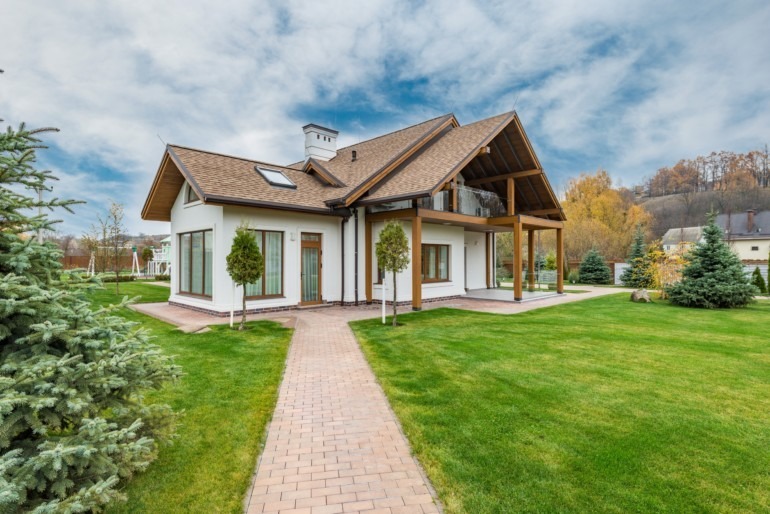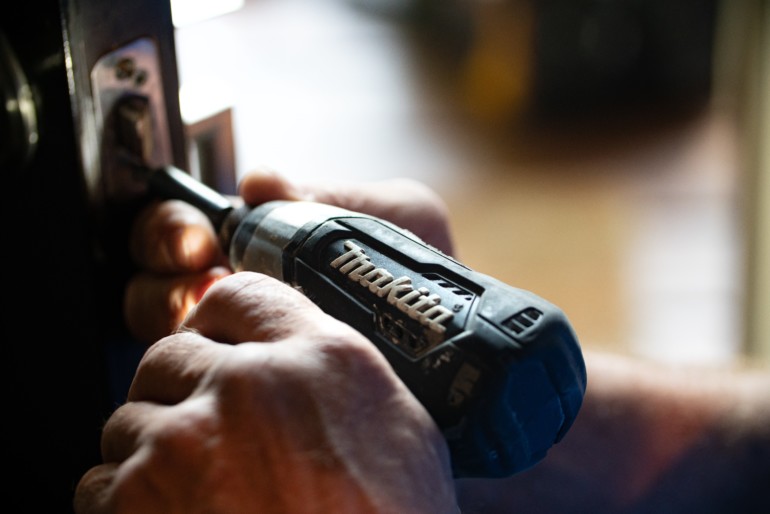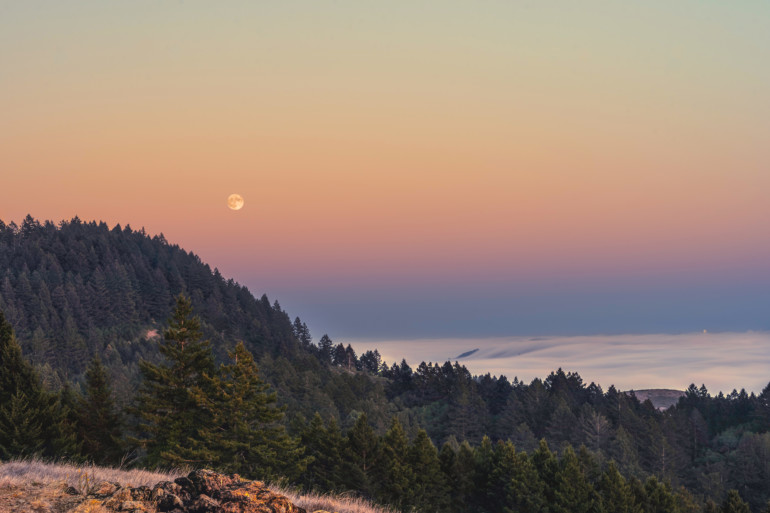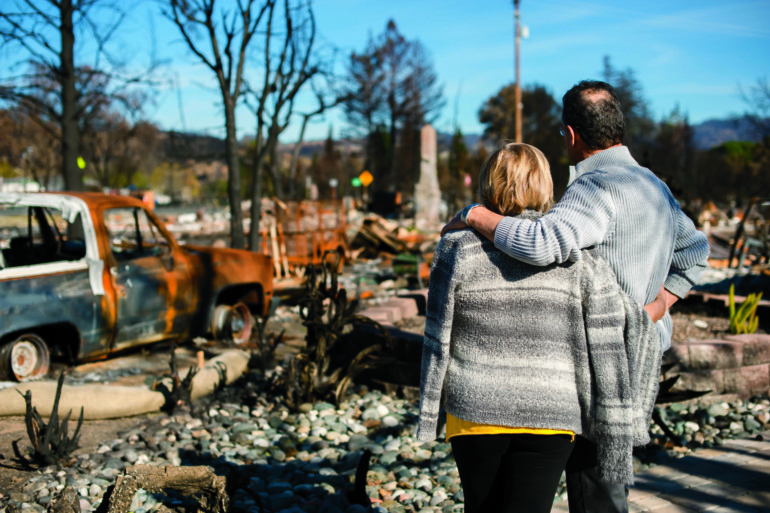Marin residents are no stranger to nature’s reminders of who’s truly in charge. Droughts, floods, landslides and earthquakes are all part of homesteading here. As far as fire is concerned, Marin has been fortunate enough to remain fairly unscathed in recent years by the flames that have ravaged so much of our Golden State. There’s no denying, however, that disastrous fires like those that have occurred in recent years in Lake, Napa, Sonoma, Monterey and other surrounding counties could easily befall Marin, as the blanket of smoke and ash they produce over our county reminds us.
“Wildfires are a cycle,” says Marin County Fire Department Battalion Chief Graham Groneman. “The problem is, we’ve had such a large gap between fires in Marin, many past fires are really outside of a lot of people’s memories. Fire is a natural part of the landscape and historically, it has burned through this county.”
The members of the Marin County Fire Department and Fire Safe Marin — a nonprofit community organizer spreading knowledge about fire preparedness — make it their business to remember, study and understand the history of wildfires in Marin, California and through-out the world. This cognitive perspective has led to a more advanced approach: learning to coexist with fire.
“If you live in Tahoe, you learn to live with the snow; in Marin, we need to learn to live with fire,” says Rich Shortall, executive coordinator of Fire Safe Marin. “We must adapt, and everyone must take individual responsibility. The basic concept behind this all: We need to develop fire-adapted communities.” Easily said. But how do we execute and become adapted to living with fire as residents of communal neighborhoods and towns?
Hardening Your Home Against Wildfires

For most, our homes are the largest investment we’ll ever make. But it’s not just about dollars and cents. It’s about Thanksgivings, birthday parties, good times and bad, and where we grow. And when it comes to safeguarding all that against fire, home hardening is the umbrella term homeowners need to know. Home hardening consists of adding fire-resistant elements, such as vent covers, double-paned windows and noncombustible roofing. Removing ignitable elements from around the house, like adjacent tree branches and shrubbery, leaves in gutters, and dead grass and brush, is also recommended. With our expansive and beloved flora growing lush and vibrant throughout Marin, this can seem a tall order.
“People are often overwhelmed by the amount of work they think it will take,” says Executive Officer of the Marin Fire Prevention Authority Mark Brown, “and replacing a roof or installing new fire-proof vents is unreasonable for some. But if everyone does what they can, houses will survive a fire. And, it will give our first responders the time they need to fight a fire.”
Most of the tasks needed to harden a home against fire, major retrofitting aside, are simple and take as much effort as a day of yard work. The main goal, and what makes the most difference in a fire, is creating a defensible space. A main aspect of that defensible space is referred to as the “zero zone” — that is, a space around the home of up to 5 feet where no combustible materials should reside, according to Marin County Fire Department Chief Jason Weber.
“We have a lot of neighborhoods in Marin that have been here for a long time, so vegetation builds up that can be fuel for fires,” says Weber. “Make sure it’s removed from the zero zone.”
Just limbing trees helps create a defensible space. “Tree branches create ladder fuel, which helps fire grow from the ground up into the tree canopy; then it can easily jump to a home,” cautions Weber.
If your garden is landscaped, consider implementing what’s referred to as “responsible landscaping.” “Horizontal separation of bushes and plants in a landscaped yard is best,” says Weber. “Just making sure they’re planted away from each other deters fire from jumping from one shrub or tree to the next.” When possible, adding a stone walkway or path to separate plantings is also advisable, he suggests.
So you’ve trimmed the trees and bagged the leaves. What should you tackle next? Vents. Embers from an existing fire can find their way into unprotected vents and ignite homes from the inside out.
“Embers can travel up to 7 miles and still ignite a structure,” says Harry Statter, the founder of Frontline Wildfire Defense System, which is based in San Rafael. “We looked into what caused structures to catch fire miles away from where the fire actually was, and 90% of the fires we discerned were caused by traveling embers.”
“Vents are the worst,” says Brown. “A lot of vents lead directly into an attic, which is notoriously the hottest part of the house. All of that heat basically makes kiln-dried wood. That’s incredible fuel for a fire.”
To make open vents safe, cover them with 1/8-inch or 1/16-inch wire mesh, Fire Safe Marin advises. The same goes for chimneys, which should be covered by a spark arrestor screen with openings no smaller than 3/8 inch and no larger than 1/2 inch.
Even small changes can make a big difference in protecting your home from fire, however. Opt for fire-resistant door mats and make sure your garbage and recycling bin lids are covered, as items like cardboard and old newspaper are extremely proficient fire starters.
Consider a Retrofit or a Protection System Install

If you have the means, a retrofit bringing your home up to compliance with Chapter 7A of the California Building Code is your best defense against wildfires. This solution may require such modifications as replacing a roof and removing wooden shingles, decks and fences.
An alternative is to install a fire protection system. Frontline’s system, for example, detects fire and saturates a home’s exterior, making it too saturated to burn. The system can be activated remotely via an app, which also provides wildfire updates in the user’s vicinity. “We focus on management of danger within the zero zone and the home-ignition zone, which is zero to 1 foot,” says Statter.
Our County, Our Home

Protecting our own properties against wildfire is likely most Marin homeowner’s first concern during fire season, which seems to be lengthening each year. But by taking responsibility for wildfire preparedness and prevention at home, residents are also protecting the beauty and essence of our county. “Contact your local fire department and ask for a defensive space evaluation,” says Weber. “It’s free, and we’ll send out an expert to your home to do a full report and let you know exactly what you can do for your specific home and property.”
Working hand-in-hand with fire departments and community organizations like Fire Safe Marin is the kind of community effort necessary to handle wildfire when it comes. “The fact of the matter is that 99% of fires in California are less than three acres,” says Brown. “We see these mega fires that are just awful, but we’re working to subdue fires before they escalate to that level.” Significant funds have been allocated to help first responders achieve that goal. The state has dedicated $18 million for fire prevention in 2021 and 2022, according to Brown — 60% of that is for vegetation management projects, public wildfire education, clearing evacuation routes and fire detection; 20% is for funding defensible space initiatives like home evaluations; and the final 20% goes to local fire departments to make sure first responders have proper training, knowledge and equipment.
With our well-funded fire departments and resources, it’s now up to individual homeowners to bring the effort full circle. “We truly believe this is a collaborative approach,” says Groneman. “The best-protected house is one that can survive without the intervention of firefighters. We need to focus on putting out fires, not saving individual houses. When homes are protected against fire, one engine can cover multiple houses, as opposed to one engine committed to each house — and that’s how we can save communities.”
Living with wildfire is the reality in Marin. And being prepared as individual residents and homeowners is what will save our homes and county when it does happen.
Get Wildfire Ready
Protect your home from fire with this basic checklist.
- Request a defensive space home evaluation at marinwildfire.org/programs.
- Install fire-resistant elements, such as vent covers, double-paned windows and noncombustible roofing.
- Remove ignitable elements from around the house, including adjacent tree branches, leaves in gutters and dead vegetation.
- Plant shrubs and trees away from each other to deter fire from jumping.
- Sign up for emergency alerts at firesafemarin.org/prepare-yourself/alerts-warnings.
For more on Marin:
- MarinMOCA’s Altered Book Exhibit and Fundraiser Supports Local Artists
- The North Bay Red Cross Honors Their Volunteer of the Year, Mill Valley’s Janet Rogoff
- Food For Thought Raises More Than $106,000 to Address Food Insecurity and Support Illness-Prone Individuals in Sonoma County
 Richard Wright is a writer from Marin whose work has appeared in San Francisco Magazine, SOMA, 944, The Olympian and numerous online publications. He has an MFA from St. Mary’s College of California in creative writing and lives in Sausalito with his wife, Stephanie.
Richard Wright is a writer from Marin whose work has appeared in San Francisco Magazine, SOMA, 944, The Olympian and numerous online publications. He has an MFA from St. Mary’s College of California in creative writing and lives in Sausalito with his wife, Stephanie.


